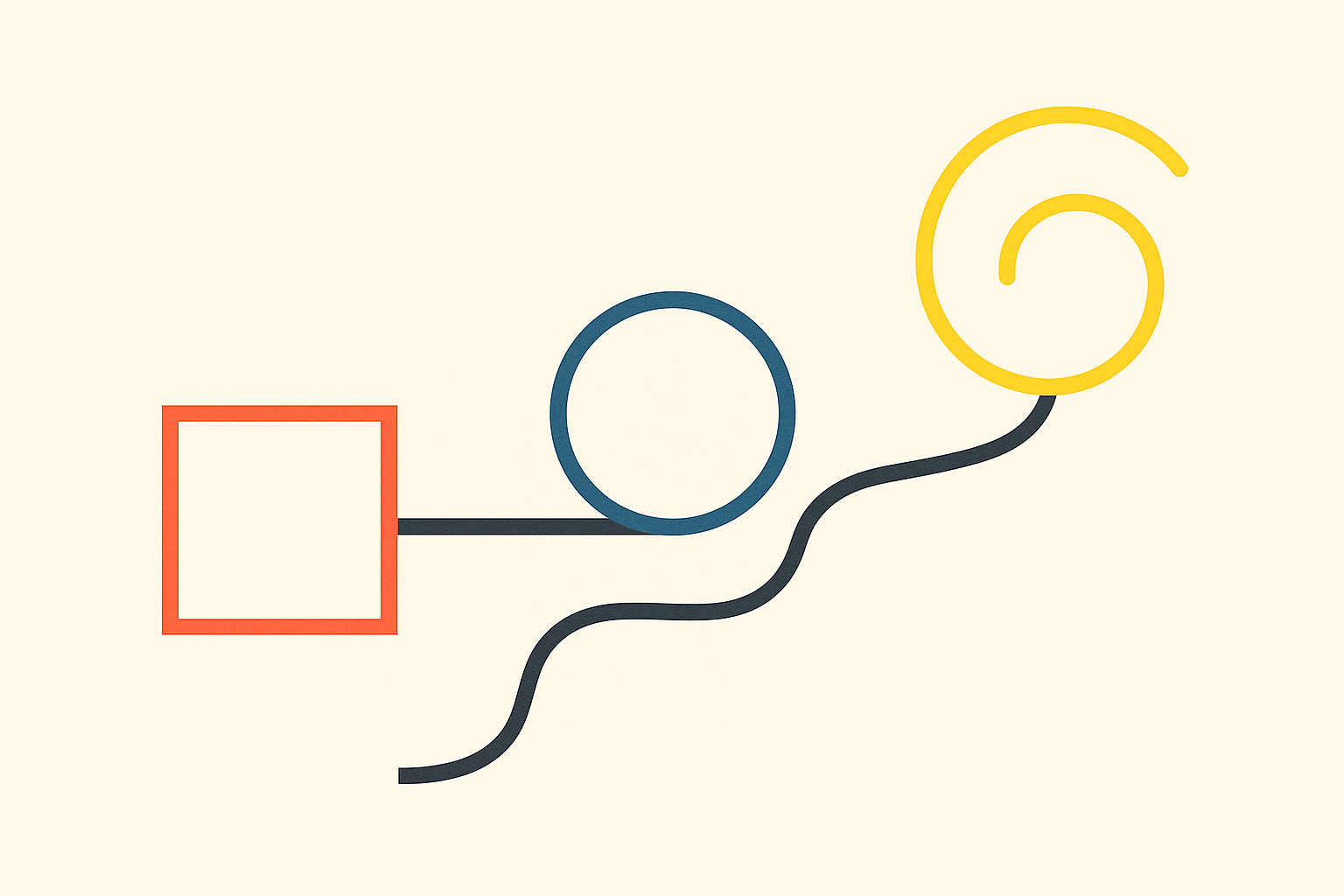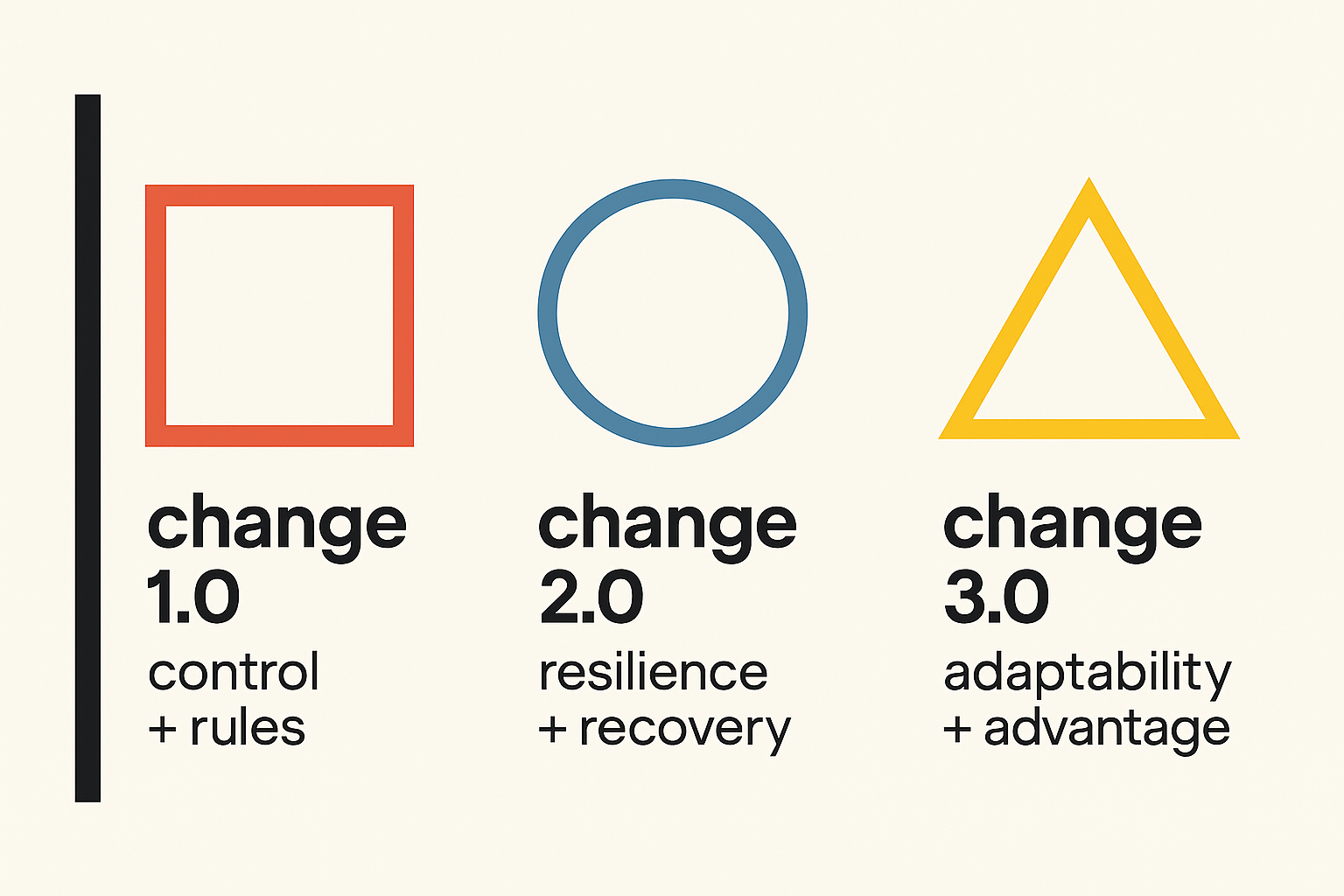Change 3.0 Manifesto
Change is no longer an event. It's the system itself.
Agilism equips you to master adaptability in an increasingly nonlinear world.

Why Change 3.0 Matters
Every era of progress reveals itself in how we relate to change.
For decades, we tried to control it. Then we learned to recover from it.
Now, we're learning to live inside it.
Change 3.0 marks that shift–from resisting uncertainty to working with it. It's the point where adaptability stops being the last resort and becomes a deliberate skill.
Where earlier 'models' chased stability, Change 3.0 builds momentum. It treats adaptation, not as damage control, but as a form of mastery.
The Three Eras of Change
Change 1.0 — Control and Rules
The industrial-age mindset: manage change by removing it.
We built hierarchies, procedures, and life scripts designed to guarantee stability.
- Predictable careers and institutions
- Five-year plans and fixed identities
- Success measured by compliance and control
It worked — until the world accelerated.
What once kept us safe became what kept us stuck.
Rigidity turned into fragility.
--
Change 2.0 — Resilience & Recovery
The information-age mindset: survive disruption by bouncing back.
Resilience replaced rigidity. The mantra became "stay strong," "recover fast," "return to normal."
- Post-crisis rebuilding and grit culture
- Corporate change-management programs
- Psychological endurance as a core virtue
An improvement, certainly — but still reactive.
Resilience looks backward. It tries to rebuild yesterday's world instead of inventing tomorrow's.
It treats change as damage to repair rather than material to design with.
We learned to "bounce back" from disruption. But bouncing back isn't enough in a world that never stops moving.

Change 3.0 — Adaptability as Advantage
The nonlinear-age mindset: treat change as your natural environment.
The map is always redrawing itself — technology disruption, climate change, changing cultures and geogolitics, redrawing of careers and education systems.
Adaptability is no longer a soft skill. It's the new intelligence.
Core Shift:
Change isn't the setback. It's the system.
The goal isn't to bounce back from disruption — it's to build forward.
Make adaptability your advantage, not just your survival tactic.
Those who adapt fastest don't merely endure. They outpace, outgrow, and outlast.
Resilience and recovery are no longer enough - they were built for a more predictable world.
What you need now is something deeper: a mental operating system designed for motion itself.
That's what Agilism offers. Not change-management as reaction, but adaptability as foundation. A way to thrive through change, not in spite of it.
Change is no longer an event. It's the system itself.
A Simple Framework
Change 3.0 isn’t a slogan—it’s a practice.

The Agilism Framework help you avoid reacting to change and turns adaptability into a daily habit.
It’s built on 5 Dimensions—lifestyle design, uncertainty, thinking, emotion, and goals—and guided by 21 Principles that act as mental guardrails for thriving in a nonlinear world.
Together they form a living system for change—flexible, iterative, and designed to evolve as you do.
Go Deeper
- The Evolution of Change → Why we need Change 3.0
- The Myth of Stability — Why Change Feels So Hard
- Adaptive Thinking in Real Life
- From Bounce-Back to Build-Forward
- The 21 Principles → Practical tools for adaptability
- Agilism FAQ → How to start your own practice